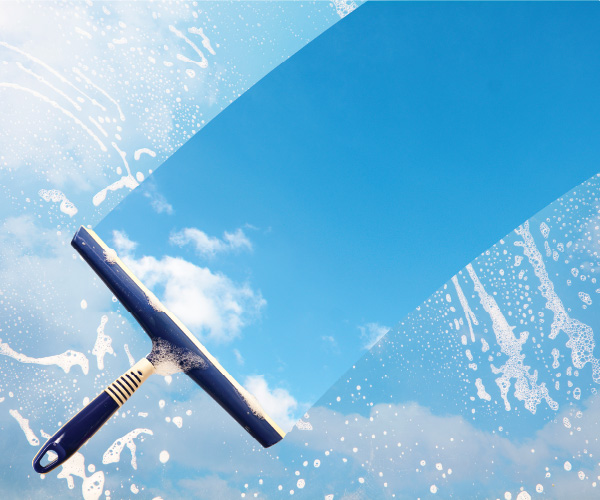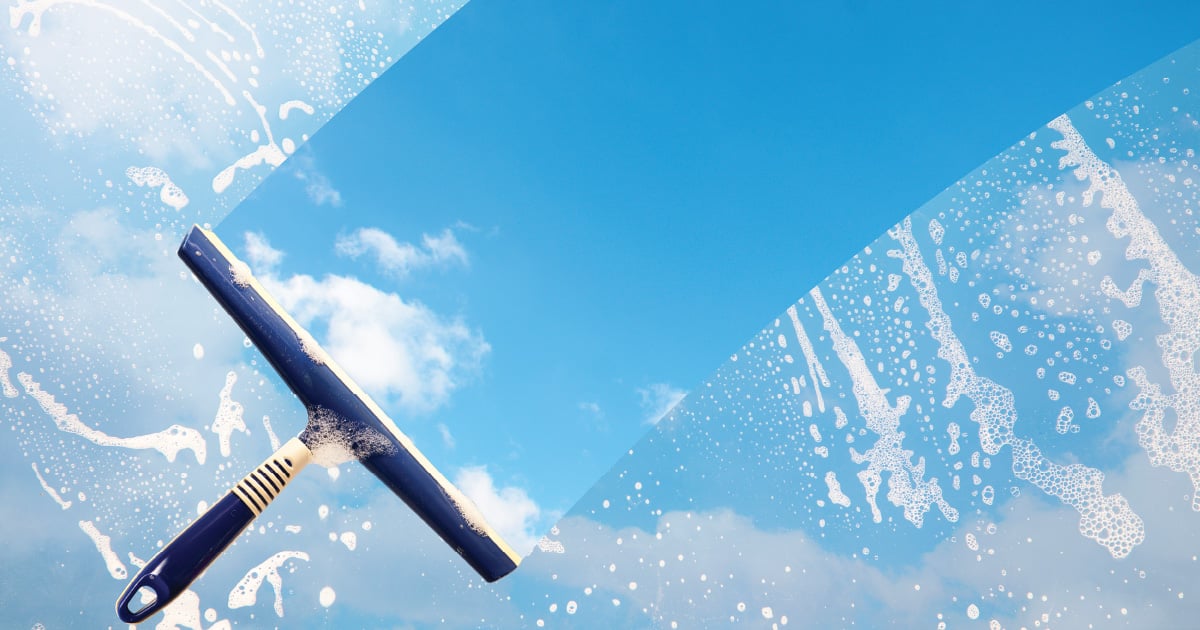
How Transparent Do You Need to Be?
January 25, 2023
8 minute ReadBy Lindsey Quick
Costs are rising in nearly every sector and on nearly every kind of product and service available. Consumers are feeling it at the grocery store and, until most recently, at the gas pumps. Businesses are feeling it, too, just as many of them are recovering from pandemic-era uncertainty.
Most businesses can’t absorb all of these increases and are forced to pass them along to customers. While most customers are aware of the challenges facing the economy, it doesn’t make it any easier to accept these increasing costs for the goods and services they’ve been purchasing. As companies are forced to increase prices to offset the cost of doing business in today’s environment, how should they communicate those shifts with their customers? Or should they at all?
Increases in the Industry
These challenges and questions are no different in the car wash industry, where supply chain challenges and rising costs are happening just as they are in other industries.
This situation has been on Justin Young’s radar for a while. Young is the director of marketing for Splash Carwash & 10-Minute Oil Change, a family-owned business with locations across the state of Arkansas, providing services that include car wash, interior cleaning and oil changes in one facility.
“All of our costs of goods have increased to some degree,” Young said. As Splash’s suppliers have experienced price increases on their end, some of those increases have been passed onto Splash. One of the largest increases to their business specifically has been the cost of oil for their 10-minute oil change facilities. Young said their suppliers are doing everything possible to ease the burden and that has made a difference. “Fortunately, we work with great suppliers who are working hard to mitigate these cost increases as much as possible.”
According to Young, it’s important to deliver value to your customers — now more than ever.
“It’s hard to raise prices if you aren’t putting out a quality product or service,” Young said. “We’re focused on providing services with a level of excellence that allows our customers to feel good about the money spent with us.”
You’re Raising Prices — Now What?
Once a business has decided to increase prices for its customers, deciding how to communicate it — if at all — is key.
In some industries, such as consumer packaged goods, it’s common practice to reduce the quantity — such as the grammage of a package or the item count — and maintain the price, according to a June 2021 article from the Harvard Business Review by Utpal M. Dholakia. This technique increases the per-unit amount paid by consumers but keeps the visible package price unchanged. Dholakia also noted that some brands might reduce promotions, coupon deals and other forms of discounting, which raises prices indirectly. Dholakia shared an example from KFC, which removed in-store promotions for its popular $30 fill-up bucket after facing a shortage and soaring prices for chicken.
Dholakia noted that for some businesses, this kind of option isn’t possible, such as products sold with subscriptions, leases or contracts. In these cases, businesses have to communicate that prices have increased before the next billing cycle. No matter the business and its products or services, being transparent with price increases can be tricky.
“This task is mined with pitfalls,” Dholakia noted in his article. “When performed poorly, the news can lead to undesirable outcomes like customer complaints, social media outrage, and even worse, having to walk back the price increase or losing customers altogether.”
In his article, Dholakia suggested three actions for businesses to take when communicating a price increase, backed by evidence in academic research and Dholakia’s own experience in working with companies.
Communicate With Clarity
First, he suggests calling the action a price increase, not a price adjustment or another euphemism.
“In emails and letters to customers, well-loved brands such as Netflix, Microsoft, Sling and YouTube TV have all referred to a price increase as ‘updating price’ or ‘adjusting price’ in the past,” Dholakia said. He said this is common because companies are reluctant to tell their customers that they are raising prices.
“While this may seem like a small thing, euphemistic messaging can cause serious harm, fraying the relationship with loyal customers. Decades’ worth of consumer psychology research has consistently found that attempts to obfuscate bad news rarely pay off for brands,” Dholakia said. “Customers know that brands are trying to influence their opinions and behavior and appreciate it when they use helpful, transparent and informative influence methods.”
Dholakia summed it up by saying that when a brand uses a euphemism to convey price increases, it makes customers suspicious and critical of the information in the communication from the brand. “Some customers may interpret the euphemistic phrasing as talking down to them, and even customers who are on the brand’s side may feel that they are being deceived or patronized. Where communicating price increases, it is best to call a spade a spade,” Dholakia said.

Keep the Customer at the Center
Second, Dholakia says it’s important to explain the reasons for the price increase clearly.
“Research shows that after the size of the price increase, the perceived fairness of the motive for it is the second-biggest driver of how customers react,” Dholakia said.
Consumers are thinking about inflation, supply chain shortages, rising costs and a possible return to some sense of normalcy after the pandemic. With all of this on their minds, hearing about a company’s price increases confirms what they’ve been expecting. Because of this, it’s worth making an effort to craft a short and clear explanation for why the prices are increasing.
Establish A Customer-Centric Value Narrative
Third, Dholakia suggests linking the price increase to what he calls a customer-centric value narrative.
A value narrative — a vivid and compelling story for why the price is being increased that focuses on customer value — is critically important to your communication. Dholakia pointed out that the most effective price increase communications are customer-centric and provide a value narrative.
In his article, Dholakia shared an example of communication from United Airlines when it raised prices on its United Club membership. “The explanation tells United Club members that prices are increasing to give them more benefits they’ve been asking for,” Dholakia said. “A compelling value narrative establishes the sequence of actions for the price increase. It starts with customer feedback, then leads to identifying unmet needs, is followed by a significant investment by the brand, which results in new features and finally culminates in the delivery of benefits that customers value.”
The communication from United Airlines was concise — only a few sentences long — but provided a credible explanation for the increase that resonated with its core customers, Dholakia said. “Most importantly, it places the customer at the center of the price increase story, linking the price increase to substantial added customer value. A well-crafted value narrative conveys to customers that the brand has undertaken the effort to understand how its customers derive value and factored this knowledge into the pricing process.”
The value narratives can also be effective when the price increase is due to an increase in costs. “Telling customers that the brand can only continue to provide the current level of benefits if it raises the price and is choosing to do so rather than degrade the product’s quality is a powerful argument. It reinforces the brand’s values to the customer.”
In the article, “Inflation Driving Up Prices? How to Communicate a Price Increase to Customers” from the U.S. Chamber of Commerce, content contributor Emily Heaslip echoed these sentiments. “Emphasize the benefit for the customers — continued quality, the same service levels, availability — to get them on board,” Heaslip said. “Being transparent makes your communication more trustworthy and authentic and makes it easier for a customer to justify paying the higher price.”
Dholakia’s final advice in the Harvard Business Review article was that organizations should approach the task of communicating price increases with the same degree of sincerity, attention to detail and customer focus that they bring to other brand-building projects like launching new features or extending product lines. “Such effort will be rewarded with a price increase that sticks and customers who feel like valued partners of an authentic brand with their interests in mind,” Dholakia said.
Leading With Transparency and Authenticity
Splash’s Young agrees with Dholakia’s advice to be transparent or face consumer backlash.
“Companies that try to ‘sneak it in’ or don’t roll out a price increase with complete transparency are setting themselves up for a lot of customer resolution on the back end,” Young said. Splash made the decision to increase prices in October 2021 and committed to being thoughtful and transparent throughout the process.
“When we increased our prices, we aimed for total transparency with our guests,” Young said. “Our leadership team met and determined the overall theme of the message we wanted to communicate. Then our marketing team went to work.” At Splash, the change was primarily communicated in two ways.
The team started with a short video explaining the change. The video and a letter from the owner were added to a landing page on the company’s website. The team then sent a link to that page via email and text to all of their customers.
Next, the team printed four-by-six-inch cards to hand to each customer two weeks before the price change went into effect. The card’s core message was focused on Splash’s commitment to maintaining high standards of quality and customer service, the importance of investing in people in order to attract and retain the best and investing in state-of-the-art facilities, technology and equipment.
In closing, Splash thanked its customers for their understanding. Their communication approach aligns with the advice from Dholakia: Be transparent, explain the “why” and tie it back to the customer.
What Young and the Splash team learned was that the sting of the price increase is never as dramatic as you build it up to be in your head. “Each time we’ve made price changes through the years, it’s been relatively low impact,” Young said. “Most people understand the rising costs of doing business. My advice is to just rip the bandage off if you need to do it, and be over-the-top in transparency along the way.”
Preparing Your Team
Another component of a successful communication plan is involving your team. “You’ll want to alert your entire company as to when you plan to break the news and how your employees should deal with an unhappy customer,” Heaslip said. Providing talking points or answers to frequently asked questions can help your team members feel armed with the information they need to respond to customer questions and complaints.
While no one looks forward to increasing prices and communicating that change to customers, it’s a necessary evil in today’s environment. What’s most important is how you do it — be transparent and direct with your language, be sure to communicate the “why” behind the change and ensure customers know the decision was made so the high quality of services and products you’ve been providing could be maintained.








